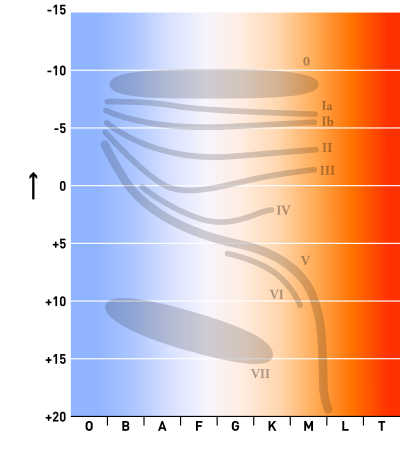
A red giant is a luminous giant star of low or intermediate mass (roughly 0.3–8 solar masses (M☉)) in a late phase of stellar evolution. The outer atmosphere is inflated and tenuous, making the radius large and the surface temperature around 5,000 K [K] (4,700 °C; 8,500 °F) or lower. The appearance of the red giant is from yellow-white to reddish-orange, including the spectral types K and M, sometimes G, but also class S stars and most carbon stars.
Red giants vary in the way by which they generate energy:
- most common red giants are stars on the red-giant branch (RGB) that are still fusing hydrogen into helium in a shell surrounding an inert helium core
- red-clump stars in the cool half of the horizontal branch, fusing helium into carbon in their cores via the triple-alpha process
- asymptotic-giant-branch (AGB) stars with a helium burning shell outside a degenerate carbon–oxygen core, and a hydrogen-burning shell just beyond that.
Many of the well-known bright stars are red giants because they are luminous and moderately common. The K0 RGB star Arcturus is 36 light-years away, and Gacrux is the nearest M-class giant at 88 light-years' distance.
A red giant will usually produce a planetary nebula and become a white dwarf at the end of its life.
